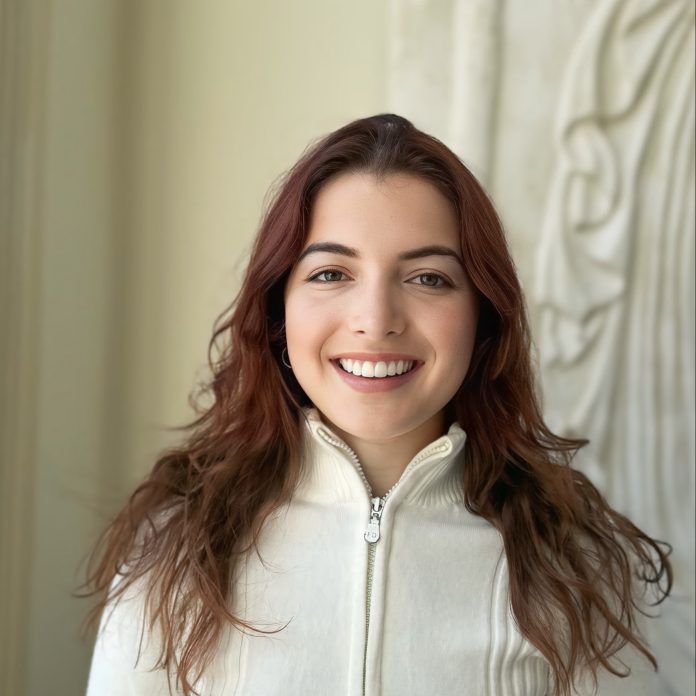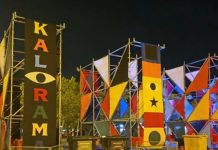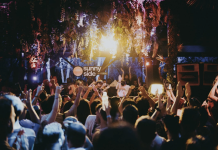They say that necessity is the mother of invention and, following a particularly traumatic experience on a night out with friends, Tamzin Lent saw the necessity in being able to locate and contact her friends when normal mobile phone signals were unavailable. We needed to find out how the notion developed from idea to Where You At, an app that can provide indoor maps and offline friend finding.
Hi Tamzin, let’s dive straight in with where the idea came from.
“The way I see it is that I love going out; at the core of it has always been that I just want to be able to have a really good time. And the times when I’ve gone out, been able to stay in touch with my friends and just felt really safe in certain spaces, have been amazing. I want to help create safe spaces where people do feel empowered to have fun. I think it’s unfortunate that I get people kind of saying it’s kind of sad that, your product, like, needs to exist. But to be honest, there’s a lot of it that’s just about empowering people to go out, have fun, go to a festival and know where all your friends are and have this superpower. Obviously that critical safety element is beneath it all.”
What made you think that there was a better way of doing it, and how did you find the better way?
“I had a number of different experiences. I had a particularly bad one where I lost all my friends in a I had no phone signal and I just ended up in a really horrible situation. I wholeheartedly believe that having the ability to locate people at that venue and communicate with them could have helped me in that situation.
“I was in my second year of university when I thought that I have to do this, I have to build this because there has to be a better way. From the convenience side of things, from the safety side of things, from the fact that when my cousins go to festivals nowadays, they’re terrified about having no phone signal and losing their friends.
“I think it it’s such a big and critical problem in a space that’s actually just fun and really culturally important. I believed it needed to be solved. [I considered] how much better these experiences would be if you saw an indoor map of the space or a precise map of the venue, festival or event, so you could just track your close friends’ locations inside that map and see if they’re, say, by the bar or by the dance floor.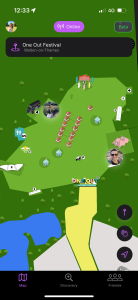
I remember I had this sort of mad week when I first had the idea, of just researching everything and wondering you how are you going to be able to see through walls? And that’s when I stumbled across Bluetooth beacons and Bluetooth technology, which had the added benefit of enabling indoor location simultaneously and enabling the transmission without phone signal or internet. And that’s what really excited me.
It sounds like this requires something a little bit more than just your friends having a mobile phone. Does there have to be some kind of buy-in or registration from a festival or a club?
“Yes. In short, we partner with the festivals and they provide a site map of the, of the event. That’s where the magic happens because you’re able to see a very a customized and quite interactive map of the sites. You walk into Drumsheds, for example, and you can see that’s where the bar is and that’s where the dance floor is.
“We also then put our own hardware inside physical venues. That involves these small beacons that look a little bit like an AirPods case.. It’s the combination of our mesh technology between phones and the beacons that enables our network. It’s almost like a local mobile network inside a venue.”
It seems that the advantage to users is pretty obvious. What’s the advantage to the festival of having the technology there?
“In terms of the core offering, in terms of enhancing guest experiences? It’s very much that, when you go to an event where you know where your friends are, you stay longer, there’s data to prove this. Where you stay longer, you’re more likely to spend more and you’re more likely to revisit. So that investment in guest experience really contains benefits.
“The next phase of the product, something that we’re excited about, is the potential, when it comes to helping programming and marketing teams at festivals. That’s both by having a very safety conscious, event loving, group of users on the platform, and simultaneously, having some very interesting insights in terms of understanding footfall and crowd density thresholds. That’s something we’re really looking to invest in, because essentially being able to understand and optimize crowd traffic flow on sites can increase bar spend significantly, as well as being a critical safety piece for being able to know where there’s hotspots, where there’s too much congestion and more on an operator dashboard.”
You had the idea and researched the technology while in your second year at Oxford. Was this relevant to the to what you were studying at the time?
“No, it wasn’t. I did English and then law, but I think I just had this absolute burning passion for the tech. I’ve always been interested in technology, and design in particular; I designed most of the early prototypes. I’ve always been really interested in the intersection between art and technology, culture and technology. Quite a few of my school projects, for example, were predicated on that. You know, building a sculpture that you could text and various cool bits of tech; I’ve been a bit of a geek for it. But yeah, absolutely nothing to do with what I studied.”
How did you beef up the student loan to take this into development?
“In terms of funding, we were supported by the University Ecosystems and Cambridge Enterprise funded us. I had an early team of people who I bought in to help and support the vision and what we’re building. We also won some competitions.
“To be honest, it didn’t really get started until last March; that’s when I was able to go full time on it. We raised a pre-seed round, then earlier this year we raised a £2.5m funding round. That’s what’s basically enabled us to build out the majority of the technology, because previously it was sort of going venue by venue. It’s also enabled us to really level up our team. We brought in a CTO who worked at ARM for several years and was very involved in building these deep tech mesh systems. Phil joining the team has been a real game changer for us in terms of that shift. We got the patent granted for the technology last year.”
What might be over the horizon for Where You At?
“ I would love to explore how we turn events from being this kind of art and this mystery to a bit of a science. I do think that data is quite key to that, empowering operators to understand [for example], traffic flow is much higher than expected at this event, understanding congestion and understanding the risks of programming two big artists at the same time or simultaneous times, having the data to really back up and validate booking decisions. We see as being really critical.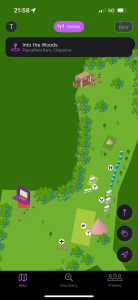
“But to be super honest, we’re in this building phase of trying to understand and solve. We’re constantly asking organizers, if you had a wish list, and we could solve any problem, what would that be? One that’s really come up again and again has been understanding where people are feeling unsafe or insecure, or struggling on site, and them being able to directly communicate and send specific messages to people in certain areas of the event. Also to say one bar’s very busy and another bar’s empty to move them to the less busy bar and optimize traffic like that.
“I think the third thing that’s come up again and again is this absolute void when it comes to data and understanding how people are moving around on site and understanding how to validate programming decisions. So that’s something we’re quite focused on building out.
“I think the number one core thing that unites it all is that we all want to have a good time at events. That involves feeling safe and feeling like you’re able to find your friends, but also that you’re not going to get crushed in a crowd. What we’re, we’re doing is really working to solve those problems and try and bring as many operator insights and perspectives into what we’re building.
“We’ve done trials at Drumsheds, Colour Factory, a number of the larger nightclubs. We did two festivals in September and we are looking to partner with more and more festival, to bring on some pilot festivals to really explore the technology in the festival sector.
“My goal is to get it into every club, every venue, every festival and make those real-life experiences as fun and friction free as they really deserve to be.”
If Emily Eavis calls tomorrow and says we want this at Glastonbury next year. What’s your answer?
“Bring it on, we’d love to. I mean, we’ve been in trials for, doing pilots and continually testing and refining the technology to make sure that it’s capable of scaling. There’s always challenges along the way, we’ve found those and bought in expertise to be able to scale and deliver. Yeah, I mean, it would be a big job, but we’d absolutely love to do Glastonbury.”
And who’d doubt that they could? From traumatic experience to finished product, Tamzin and her team have harnessed technology to deliver defined benefits to providers and consumers of entertainment.


